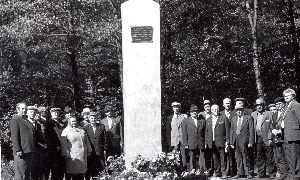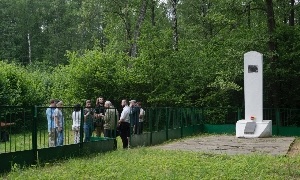Krasnostav holocaust
Records from Archive of Yad Vashem.
|
Senigov Forest During the first days of August 1941, apparently members of the Gendarmerie (rural police) and Ukrainian auxiliary policemen arrived in the town by covered truck. They drove about 50 Jewish men out of their homes and collected them on Market Square. After keeping them there for some time and then releasing several of them, the Gendarmerie men and Ukrainian policemen loaded some of the Jews onto a truck (apparently others were taken on foot) and took them to a pit in the Senigov Forest eight kilometers south of town, where they were shot to death. |
Guta Forest In the early morning of August 28 or 29, 1941 a murder squad apparently from the Gendarmerie (rural order police) arrived in Krasnostav either from the town of Dubrovka (Zhitomir District) or from the nearby town of Berezdov. Assisted by Ukrainian auxiliary police, the Gendarmerie drove most of the Jews, mainly women, children, and old people, out of their houses and assembled them at the clubhouse at Market Square. After being kept there for several hours, the Jews were loaded onto trucks and, under guard by members of the Gendarmerie and Ukrainian policemen, were taken to the forest near the village of Guta. On their arrival at the murder site the Jews were taken in groups to a pit that had been dug by residents of Guta village. According to a ChGK document, the majority of women and children were thrown alive into the pit, while most of the men were shot to death with rifles and machine-guns. According to the same document, 735 Jews -- consisting of 135 men, 320 women, and 280 children -- were shot to death. |




